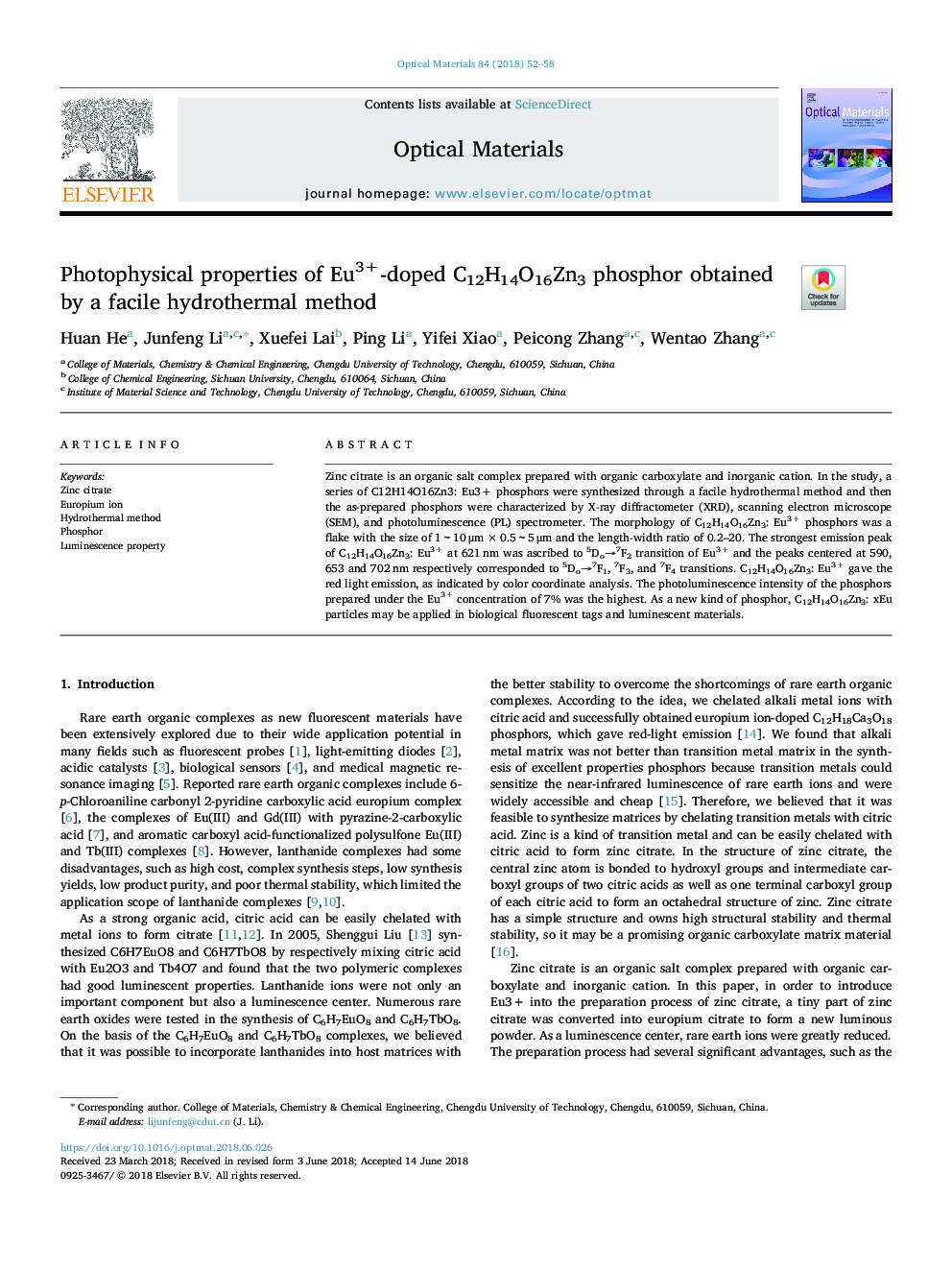| Article ID | Journal | Published Year | Pages | File Type |
|---|---|---|---|---|
| 7905856 | Optical Materials | 2018 | 7 Pages |
Abstract
Zinc citrate is an organic salt complex prepared with organic carboxylate and inorganic cation. In the study, a series of C12H14O16Zn3: Eu3+ phosphors were synthesized through a facile hydrothermal method and then the as-prepared phosphors were characterized by X-ray diffractometer (XRD), scanning electron microscope (SEM), and photoluminescence (PL) spectrometer. The morphology of C12H14O16Zn3: Eu3+ phosphors was a flake with the size of 1ï½10â¯Î¼mâ¯Ãâ¯0.5ï½5â¯Î¼m and the length-width ratio of 0.2-20. The strongest emission peak of C12H14O16Zn3: Eu3+ at 621â¯nm was ascribed to 5Doâ7F2 transition of Eu3+ and the peaks centered at 590, 653 and 702â¯nm respectively corresponded to 5Doâ7F1, 7F3, and 7F4 transitions. C12H14O16Zn3: Eu3+ gave the red light emission, as indicated by color coordinate analysis. The photoluminescence intensity of the phosphors prepared under the Eu3+ concentration of 7% was the highest. As a new kind of phosphor, C12H14O16Zn3: xEu particles may be applied in biological fluorescent tags and luminescent materials.
Related Topics
Physical Sciences and Engineering
Materials Science
Ceramics and Composites
Authors
Huan He, Junfeng Li, Xuefei Lai, Ping Li, Yifei Xiao, Peicong Zhang, Wentao Zhang,
